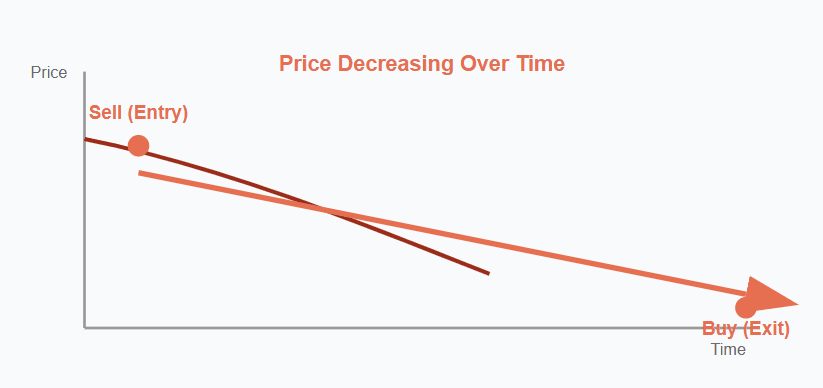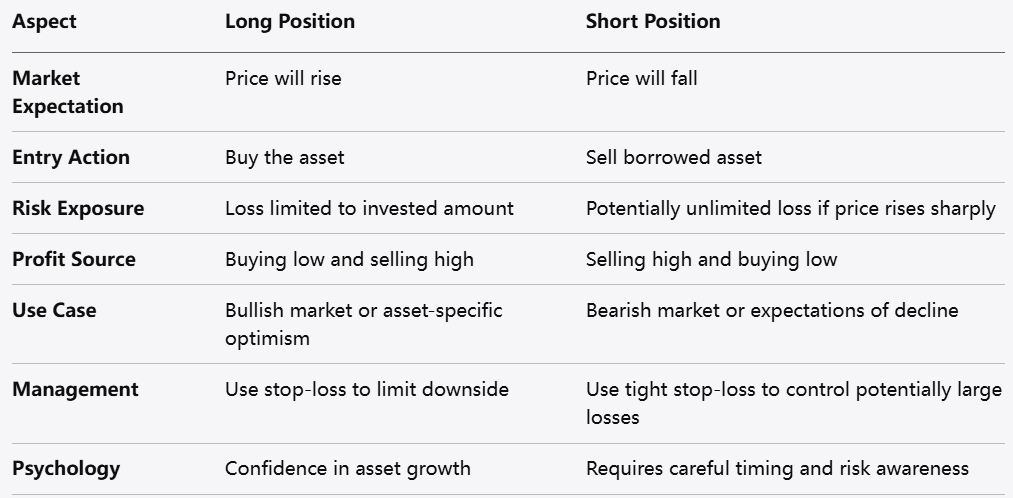
Advanced Trading Strategies: In trading, a position refers to the amount of a financial instrument that a trader holds in the market.
It represents exposure to price movements and can be either a long or short position. Understanding positions is fundamental to participating in various markets, such as stocks, forex, or commodities.
A position indicates the direction the trader expects the market to move. Holding a position means being committed to an outcome based on that expectation, which guides the strategy for entering, managing, and exiting trades.
A long position is established when a trader buys an asset expecting its value to increase. It reflects optimism about the market’s direction and involves purchasing the asset with the intention of selling it later at a higher value.

When to Use a Long Order to Place a Long Position?
Traders place long orders when they anticipate upward price movement. This decision can be based on various factors such as market trends, economic reports, or fundamental developments that suggest demand for the asset will increase.
For example, if a trader believes a company will perform well due to new product launches or favorable economic policies, they may open a long position in that company’s stock. Similarly, in currency trading, if the outlook for a currency is strong, a trader may go long to benefit from an expected appreciation.
Strategies for Managing Long Positions
Set Clear Targets: Define exit points to capture gains or limit losses. This ensures discipline and helps avoid emotional decisions.
A short position is taken when a trader sells an asset they do not currently own, expecting its price to decrease. This involves borrowing the asset to sell it at the current price and later repurchasing it at a lower price, returning the borrowed amount and keeping the difference.
Short positions allow traders to take advantage of downward price movements and can be used as a hedge or speculative tool in declining markets.

When to Use a Short Order to Place a Short Position?
Traders place short orders when they expect prices to fall. This might be due to weakening fundamentals, negative news, or broader economic trends signaling a downturn.
For instance, if a trader foresees that a company’s earnings will disappoint or that market conditions will deteriorate, they may open a short position to benefit from the anticipated decline. In commodities or forex, shorting can be used to respond to oversupply concerns or currency weakness.
Strategies for Managing Short Positions
Set Stop-Loss Limits: Since losses on short positions can be unlimited if prices rise sharply, stop-loss orders are essential.
Managing short positions requires cautious planning due to their inherent risks.

Understanding long and short positions is key to active market participation. A long position reflects a view that the market or asset will rise, while a short position anticipates a decline. Each has its own set of strategies for entry and risk management.
Long positions tend to be more straightforward, as losses are limited to the initial investment, making them a common choice for many traders. Short positions offer the ability to engage in falling markets but require heightened caution due to the possibility of unlimited losses if prices increase unexpectedly.
Effective trading involves knowing when to deploy each type of position, managing risk through tools like stop-loss orders, and adapting to changing market conditions. Both long and short positions can be powerful when used with discipline and a clear plan.
Ultimately, neither position is inherently better; the choice depends on market context, personal risk tolerance, and trading goals. Combining both approaches thoughtfully can provide flexibility and a balanced approach to navigating various market environments.
Risk Warning: this article represents only the author’s views and is for reference only. It does not constitute investment advice or financial guidance, nor does it represent the stance of the Markets.com platform.When considering shares, indices, forex (foreign exchange) and commodities for trading and price predictions, remember that trading CFDs involves a significant degree of risk and could result in capital loss.Past performance is not indicative of any future results. This information is provided for informative purposes only and should not be construed to be investment advice. Trading cryptocurrency CFDs and spread bets is restricted for all UK retail clients.